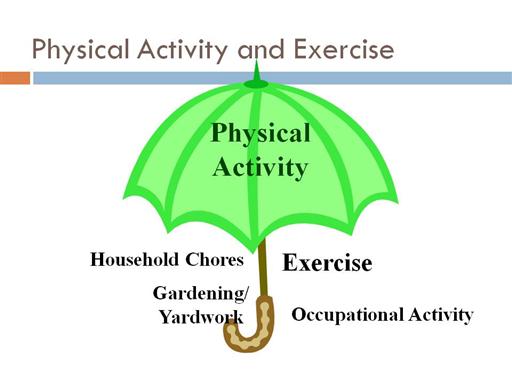| front |1 |2 |3 |4 |5 |6 |7 |8 |9 |10 |11 |12 |13 |14 |15 |16 |17 |18 |19 |20 |21 |22 |23 |24 |25 |26 |27 |28 |29 |30 |31 |32 |33 |34 |35 |36 |37 |38 |39 |40 |41 |42 |43 |44 |45 |46 |47 |48 |49 |50 |51 |52 |53 |54 |55|56 |review |
 |
The terms physical activity and exercise were used interchangeably in the past; however, we know now that they have two distinct meanings.
Physical Activity has been defined as any bodily movement produced by skeletal muscles that results in energy expenditure (Caspersen, 1985) and includes activities of all intensities. Therefore, things such as housework, gardening, and occupational activity may all be considered types of physical activity.
Exercise is considered a subcategory of physical activity and has been defined as planned, structured, and repetitive movements which result in the improvement and/or maintenance of one or more facets of physical fitness (cardiovascular fitness, muscular strength and endurance, body composition, and/or flexibility) (Caspersen, 1985).
Therefore, all exercise is considered physical activity; however, all physical activity is not exercise. As a result, physical activity intervention efforts should focus on increasing total physical activity and not just at increasing exercise.
Recommended Reading: Caspersen CJ, Powell KE, Christenson GM (1985). Physical activity, exercise and physical fitness: definitions and distinctions for health-related research. Public Health Reports; 100: 126-131. |